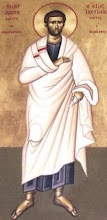 The first two as featured above are my grandmothers old blood donor badges the silver one she was given upon donating 25 pints and the gold on 50. Considering you can only donate up to three pints in any one year as you are required to have a minimum of four months between donations these badge represent quite an achievement. My grandmother can no longer give blood because of her age but she inspired me to do so and to date I have given 10 pins and been awarded my first badge too.
The first two as featured above are my grandmothers old blood donor badges the silver one she was given upon donating 25 pints and the gold on 50. Considering you can only donate up to three pints in any one year as you are required to have a minimum of four months between donations these badge represent quite an achievement. My grandmother can no longer give blood because of her age but she inspired me to do so and to date I have given 10 pins and been awarded my first badge too. I also have a enamel badge of a golliwog dressed as a nurse. I particularly treasure this one because it is a little rarer than the others as from the 1950s onward the word 'golliwog' has been used as a term of racial abuse directed at black people reducing the popularity and sale of golliwogs as toys and manufacturers who have used golliwogs as a motif have often withdrawn them as an icon.
I also have a enamel badge of a golliwog dressed as a nurse. I particularly treasure this one because it is a little rarer than the others as from the 1950s onward the word 'golliwog' has been used as a term of racial abuse directed at black people reducing the popularity and sale of golliwogs as toys and manufacturers who have used golliwogs as a motif have often withdrawn them as an icon.
And just last weekend I acquired a new enamel badge to add to my collection. Only two weeks previously I had admired an enamel badge one of the Rosminian Sisters that serve the parish of St Marie's was wearing. I mentioned I collected them and much to my happiness not long afterwards she has managed to acquire one for me. I have tried repeatedly to get a better photograph than this to show you but unfortunately I have had no success however, a similar stain glass version can be seen as my profile picture.

It is known as 'The Pelican and Her Piety' and the motto reads 'LEGIS PELENITUDO CARITAS' which means 'Love is the fulfillment of the Law'. Blessed Antonio Rosmini adopted the image of the Pelican feeding her young when he formed the ‘Institute of Charity’ (Rosminians) and the ‘Sisters of Providence’ (Rosminian Sisters). Since that time the Pelican feeding her young has been the symbol of the Rosminian Order which schools run by the Rosminians have adopted.
This particular Rosminian Pelican badge is worn by members of the 'Past Pupils Association' of Our Lady's Convent School Loughborough and contains the initials LC on the pelican's wings to indicate Loughborough Convent.
The Symbolism
The pelican was said in medieval bestiaries to peck at its breast in order to feed its young with its own blood. In a variation of the story, it could revive its young after death by sprinkling them with its blood. In both tales, the pelican gives its blood to feed, nurture, and save its offspring, which was seen as a direct analogy with Jesus' sacrifice. It is a popular symbol and can been seen throughout churches and cathedrals in stain glass and masonry work.
Thomas Aquinas even used the allegory in his 'Adoro Te Devote'. To best appreciate this piece listen to it in Latin (I have also included a poetic English Translation Below).
Prostrate I adore Thee, Deity unseen,
Who Thy glory hidest 'neath these shadows mean;
Lo, to Thee surrendered, my whole heart is bowed,
Tranced as it beholds Thee, shrined within the cloud.
Taste, and touch, and vision, to discern Thee fail;
Faith, that comes by hearing, pierces through the veil.
I believe whate'er the Son of God hath told;
What the Truth hath spoken, that for truth I hold.
On the Cross lay hidden but thy Deity,
Here is hidden also Thy Humanity:
But in both believing and confessing, Lord,
Ask I what the dying thief of Thee implored.
Thy dread wounds, like Thomas, though I cannot see,
His be my confession, Lord and God, of Thee,
Make my faith unfeigned ever-more increase,
Give me hope unfading, love that cannot cease.
O memorial wondrous of the Lord's own death;
Living Bread, that giveth all Thy creatures breath,
Grant my spirit ever by Thy life may live,
To my taste Thy sweetness never-failing give.
Pelican of mercy, Jesu, Lord and God,
Cleanse me, wretched sinner, in Thy Precious Blood:
Blood where one drop for human-kind outpoured
Might from all transgression have the world restored.
Jesu, whom now veiled, I by faith descry,
What my soul doth thirst for, do not, Lord, deny,
That thy face unveiled, I at last may see,
With the blissful vision blest, my God, of Thee. Amen
To end, I would just like to say, once again a big
THANK YOU TO SISTER MARY ANGELA.




No comments:
Post a Comment